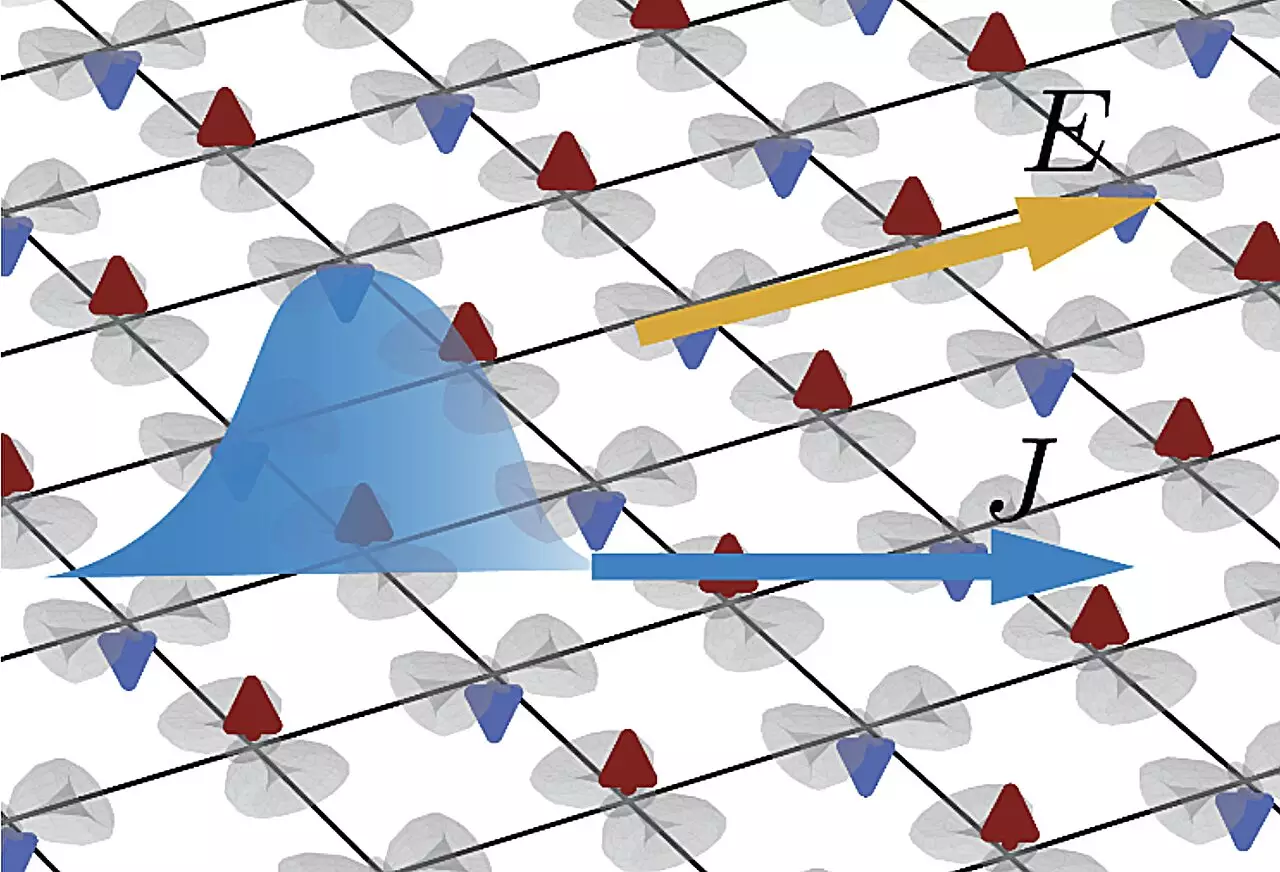In the evolving landscape of material science, a relatively new class of magnetic materials known as altermagnets has emerged as a subject of keen interest for researchers. Altermagnets challenge traditional notions of magnetism by exhibiting a unique behavior that sets them apart from their more established counterparts—ferromagnets and antiferromagnets. Unlike these conventional materials, altermagnets demonstrate variations in electron spin that correspond to their momentum, leading to an innovative form of magnetism that holds substantial promise for the future of spintronics and electronic devices. Furthermore, the interaction between their electronic structures and topology opens new avenues for exploring topological materials, paving the way for groundbreaking developments in quantum technology.
A notable study conducted at Stony Brook University offers critical insights into the complex behavior of altermagnets. The researchers aimed to investigate the nonlinear response of planar altermagnets, culminating in a publication in the journal *Physical Review Letters*. Central to their exploration was the concept of quantum geometry—a rather abstract but pivotal aspect of material properties. The researchers initially sought to understand how these materials respond under varying electrical fields, alongside the influences of quantum geometric factors on this response.
Sayed Ali Akbar Ghorashi, one of the study’s authors, shed light on a critical aspect of their findings. Special attention was given to the relationship between quantum geometry and the altermagnets’ second and third order responses to applied electric fields. The team identified an intriguing scenario wherein altermagnets, due to their lack of combined parity and time-reversal symmetries, displayed distinct behaviors in their nonlinear responses. “To the best of our knowledge,” Ghorashi stated, “altermagnets are the first class of materials where the third-order response appears as the dominant nonlinear feature, highlighting a unique signature that may guide future research.”
Quantum geometry plays a pivotal role in understanding the properties of altermagnets. Unlike traditional PT-symmetric antiferromagnets, where the Berry curvature can vanish, altermagnets present a fascinating deviation. Ghorashi explained how this absence of combined symmetries enables researchers to reassess the contributions leading to such nonlinear responses. The study revealed that the findings surpassed the researchers’ expectations, particularly concerning the potential of quantum geometric contributions in the material’s conductivity.
Through careful calculations grounded in semiclassical Boltzmann theory, the researchers detailed the quantum geometric origins of various nonlinear responses. Their work not only deepened understanding of existing knowledge but also laid the groundwork for investigating third-order conductivity components in future experiments, potentially expanding the relevance of altermagnets in practical applications.
Implications for Future Research
What does this groundbreaking work imply for the future of material sciences? As research on altermagnets continues to unfold, the implications for next-generation technologies could be significant. The researchers expressed interest in pursuing additional avenues, such as exploring disorder effects in altermagnets and how these may interact with quantum properties. Ghorashi noted that prior studies on similar PT-symmetric systems had revealed rich physics through investigating disorder, and he anticipated comparable findings could emerge from further studies on altermagnets.
The characteristics discovered in this study provide a foundational understanding needed for the ongoing exploration of altermagnets’ unique properties. Given that these materials offer substantial differences in transport characteristics compared to conventional magnetic materials, the opportunities for innovation in technological applications are expansive. Future endeavors may lead to the development of advanced spintronic devices or novel materials integrated into electronic applications as the understanding of nonlinear transport in altermagnets evolves.
The exploration of altermagnets represents an exciting frontier in both physics and materials science. By unlocking the quantum geometric intricacies that dictate their behavior, researchers are not just deepening their understanding of magnetism but are also laying the groundwork for transformative technologies. As studies advance, altermagnets may hold the key to the next generation of spintronic and electronic devices, marking a significant leap toward harnessing the full potential of quantum materials.


Leave a Reply